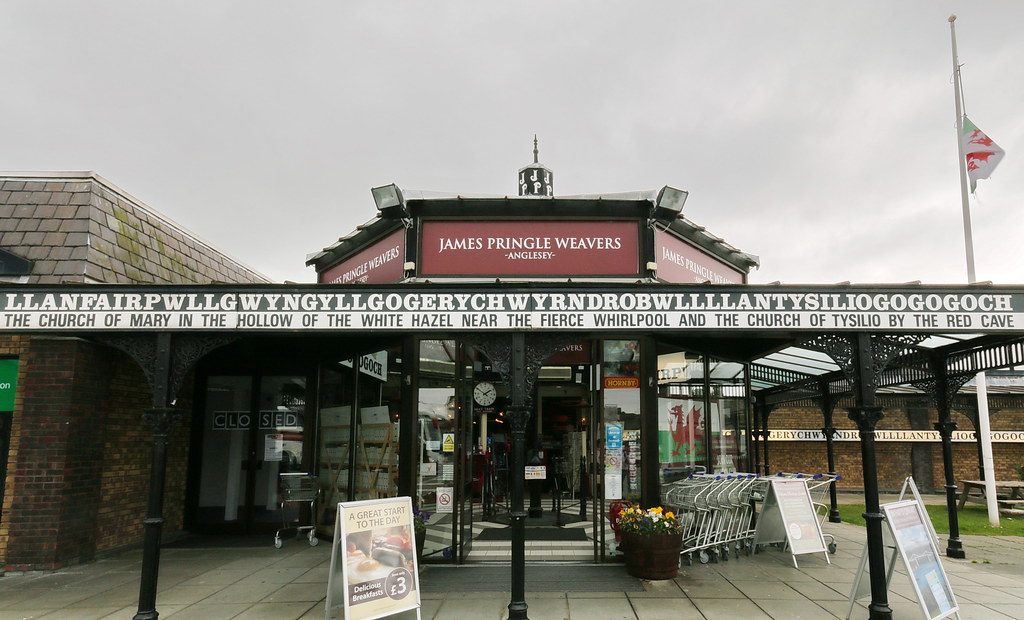
Discovering the Longest Town Name in Wales
Wales is a country steeped in rich history, vibrant culture, and breathtaking landscapes, but one of its most fascinating features is its quirky place names. Among these, a small town holds the title for the longest name in Europe and is often touted as the longest place name in the world. Nestled in the stunning scenery of North Wales, the name of this picturesque town is more than just a mouthful—it’s a cultural treasure that reflects the Welsh language, heritage, and identity.
The Name Itself: A Linguistic Marvel
The town we’re talking about is Llanfairpwllgwyngyll, which is often shortened to Llanfair PG for convenience. The full name is Llanfairpwllgwyngyllgogerychwyrndrobwllllantysiliogogogoch, and yes, it’s true! The name is a whopping 58 letters long! Let’s break it down a bit:
- Llanfair means “St. Mary’s church”
- pwllgwyngyll means “of the white hazel pool”
- gogerychwyrndrobwll translates roughly to “near the whirlpool of the church of St. Tysilio”
- gogogoch means “red cave”
When you string all that together, it paints a picture of a church, a pool, a whirlpool, and a cave, all in one delightful name. The name was crafted in the 19th century as a publicity stunt to attract tourists and is a testament to the Welsh language’s poetic and descriptive nature.
How to Pronounce It: A Guide for the Brave
Now that you know what the name means, let’s tackle the pronunciation. Welsh might seem daunting, especially for English speakers, but with a little practice, you’ll be able to impress your friends. Here’s a phonetic breakdown:
Llanfairpwllgwyngyllgogerychwyrndrobwllllantysiliogogoch can be pronounced as follows:
- Llan – (pronounced like “thlan,” with the “th” being a voiceless dental fricative, similar to the “th” in “think.”)
- fair – (like “fire” but softer)
- pwll – (pronounced “pool” but with a ‘w’ sound in the middle)
- gwyn – (like “win” but with a ‘g’ sound in front)
- gyll – (like “gill”)
- gog – (like “gog” in “goggle”)
- ery – (like “airy”)
- chwy – (like “hwi” in “hwi” but with a guttural “ch” sound, as in Scottish “loch”)
- rndro – (like “run” + “dro”)
- bwl – (like “bul” but with a softer ‘w’ sound)
- llantysilio – (like “lan” in “land” + “tis” + “ee” + “lee” + “oh”)
- gogo – (like “gog” in “goggle”)
- goch – (like “goch” with a hard ‘ch’ sound)
Repeat it a few times, and you might just find yourself making it sound effortless!
Why This Name Matters: A Cultural Perspective
Now, you might be wondering why a long name should matter to us. The significance of Llanfairpwllgwyngyll goes beyond its impressive length. It is an emblem of Welsh culture and pride. The Welsh language, one of the oldest languages in Europe, reflects the identity and history of the Welsh people.
Celebrating Welsh Heritage
Wales has a unique identity within the United Kingdom, with its own language, customs, and traditions. This name symbolizes that individuality. For many Welsh speakers, the town’s name is a source of pride and a reminder of their rich cultural heritage. By learning about such names, we encourage the preservation of the Welsh language and culture, which face challenges in a world that often favors global languages like English.
Tourism and Economy
Tourists flock to Llanfairpwllgwyngyll, not just to snap a photo by the town’s famous railway station sign, but also to immerse themselves in Welsh culture. Local businesses thrive on the influx of visitors curious about the name, the history, and the surrounding areas. The town has become a significant tourist destination, showcasing how a quirky name can have economic benefits for the community.
Visiting the Town: What to Expect
If you’re planning a trip to Llanfairpwllgwyngyll, you’re in for a treat. The town is surrounded by stunning natural beauty, with the Snowdonia National Park just a short drive away. Here are some things to look out for when you visit:
The Railway Station
The first stop for many visitors is the railway station, where you can find the iconic sign with the town’s full name. It’s a fantastic photo opportunity and a great place to learn more about the history of the town. Fun fact: the station was originally built in 1850, and the name was formally adopted in 1860.
The Local Attractions
While the name is the main attraction, there are plenty of other sights to see in and around Llanfairpwllgwyngyll. The nearby village of Menai Bridge offers beautiful views of the Menai Strait, and the stunning landscapes of Anglesey are perfect for hiking and exploring.
For those interested in history, the local church, St. Mary’s, is worth a visit. Here, you can see some beautiful architecture and learn more about the local community.
Welsh Cuisine
No visit is complete without indulging in some traditional Welsh cuisine. Make sure to try dishes like Cawl (a hearty stew), Bara Brith (a type of fruitcake), and, of course, Welsh cakes. Pair your meal with a local ale or a glass of brandy for a true taste of Wales.
Conclusion: Embracing the Uniqueness
In a world that often favors simplicity, Llanfairpwllgwyngyll stands out not just for its extraordinary length but for what it represents. It’s a celebration of language, culture, and identity, making it a significant part of the Welsh landscape. Next time you find yourself in North Wales, take a detour to this charming town. Dive into its history, engage with the locals, and perhaps even practice saying the name out loud—just for fun!
Every time we pronounce Llanfairpwllgwyngyll, we honor the beauty of the Welsh language and the culture it represents. So, are you ready for the challenge?
Discover more from Anglotees
Subscribe to get the latest posts sent to your email.
